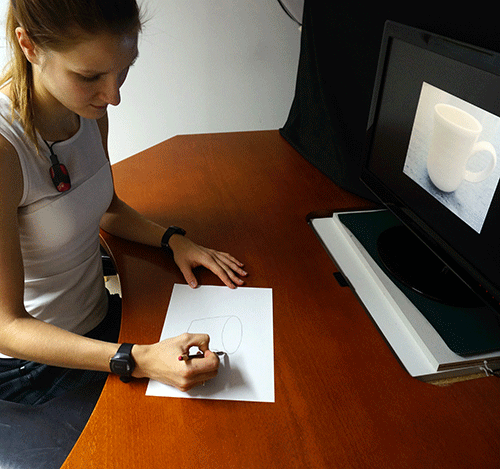How can neuroscience help understand design and craft activity? The promise of cognitive neuroscience in design studies
DOI:
https://doi.org/10.7577/formakademisk.1478Emneord (Nøkkelord):
craft, design, making, cognitive neuroscience, brain imaging methodsSammendrag
Designing and making crafts is a complex, multifaceted process that requires sophisticated, professional thinking and competence, described as reflection in action and as an embodied process in which the hand, eye and mind collaborate. This article discusses these cognitive and embodied aspects central to designing and making crafts in light of cognitive neuroscience. Understanding the specific cognitive processes and forms of knowledge used in creative practices is essential. In this article, we propose that cognitive neuroscience provides valuable tools for analysing thinking and acting processes relevant to designing and making. We discuss the challenges and opportunities that the use of brain imaging methods, in particular, provides for understanding design activities, skills and cognition. Additionally, we present two neuroscientific experimental settings from our empirical studies in which the methods of cognitive neuroscience are applied to study and detect the interrelations between drawing, forming, skill learning and the functional activities of the brain and its subareas. We argue that cognitive neuroscience provides valuable instruments and methods which complement traditional design research.

Nedlastinger
Ytterligere filer
Publisert
Hvordan referere
Utgave
Seksjon
Lisens
- Forfatteren(e) beholder sin opphavs- og kopieringsrett til eget manuskript, men gir tidsskriftet varig rett til 1) å fremføre manuskriptet for offentligheten i den opprinnelig publiserte digitale form, og 2) å registreres og siteres som første publisering av manuskriptet.
- Forfatteren må selv forvalte sine økonomiske kopieringsrettigheter overfor eventuell tredjepart.
- Tidsskriftet gir ingen økonomisk eller annen kompensasjon for innsendte bidrag, medmindre det er gjort særskilt avtale om dette med forfatteren(e).
- Tidsskriftet plikter å arkivere manuskriptet (inklusive metadata) i den opprinnelig publiserte digitale form, i minst ett dertil egnet åpent tilgjengelig langtidsarkiv for digitalt materiell, som for eksempel i de norske universitetenes institusjonsarkiv innen rammen av NORA-samarbeidet.
Verket vil bli publisert OpenAccess med en Creative Commons 4.0-lisens som tillater alle å lese, dele og tilpasse innholdet, også kommersielt, under lisensvilkårene:
Dette verket må tilskrives/ krediteres på riktig måte, en lenke må gis til CC-BY 4.0-lisensen, og endringer som er gjort må angis på en rimelig måte, men ikke på noen måte som antyder at lisensgiveren støtter deg eller din bruk.



